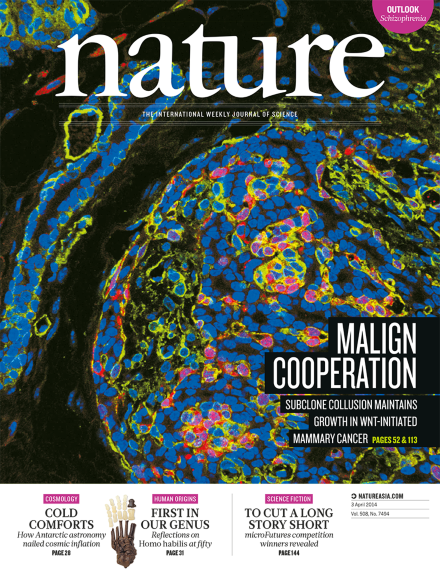Volume 508 Issue 7494, 3 April 2014
Editorial
World View
Research Highlights
Seven Days
News
News Feature
Comment
Books & Arts
Correspondence
News & Views
-
Ring in the new
Collection:
Article
Letter
Technology Feature
-
Sharp shooters
Collection:

